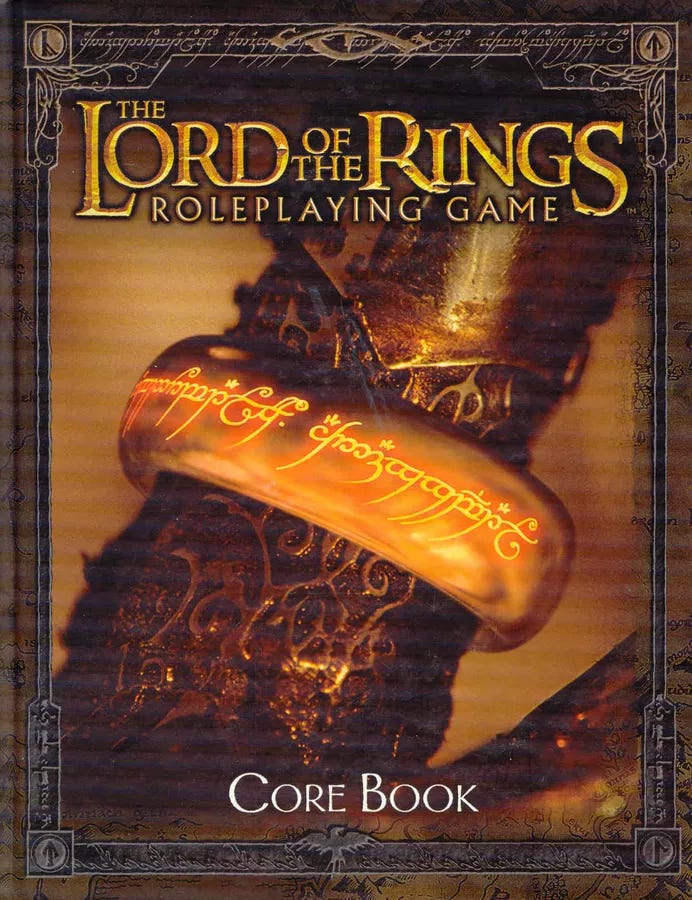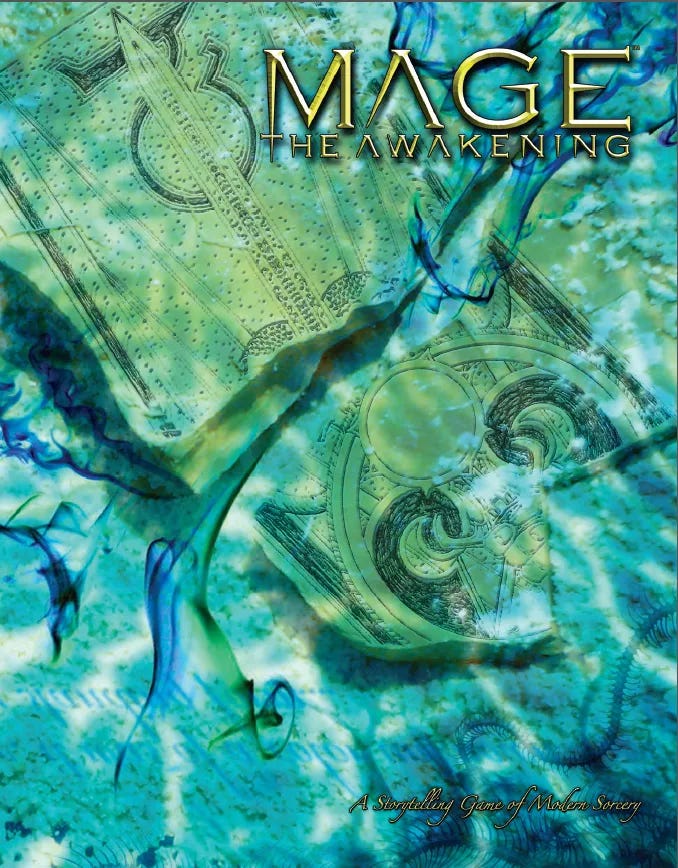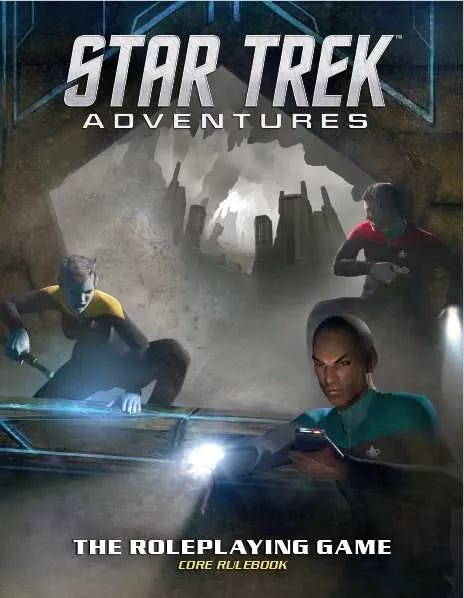In This Issue:
Guest Post - My Roleplaying History: Part 2
Free map from our partner Light in Darkness Gaming
Pocket Quest 2024 Progress: Week 6 (One week left!)
Welcome to Issue #13. I'm K.J. We focus on the history of RPG as told by my good friend Warren Davidson. I appreciate his guest writing, and we plan to do even more together, so watch this space! I offer a quick Pocket Quest update (Week 6 of 7) - plus a reveal of the cover art for my game.
But first, our cartographer partner Schlau (Light in Darkness Gaming) is giving all readers a free bell tower map with day and night variations along with a visual teaser of an upcoming adventure.
*I'm K.J. - hobbyist writer, creator, long-time GM, and player who loves supporting and encouraging others in the RPG community. I also playtest and proofread scenarios. I enjoy playing bass guitar and eating dark chocolate but not at the same time.
I started Watch Well Games at the end of 2023 to share stories and create community. I have a lot planned and hope you'll join me.
Free map from Light in Darkness Gaming
Our cartographer partner Schlau (Light in Darkness Gaming), is working on an upcoming adventure (or few!). But for today's newsletter, he is giving away a bell tower map with day and night variation - no strings attached!
Just click on the button above to access the Dropbox link and download. Reach out if the link is expired, and we'll send out a fresh copy.
My Roleplaying History: A commentary on the Hobby, Part 2 - The 2000s and 2010s
by special guest writer Warren Davidson
I’m a long-time gamer with a passion for RPGs. I’ve written several game reviews and attended conventions where I’ve run homebrew adventures. I hope my experiences make for an interesting and fun read. And I hope one day to create and publish my own RPG.
Welcome back to my trip down memory lane with part two of my commentary on the history of role-playing games. This time I cover the period of the 2000s to the 2010s. A momentous event occurred in 1997 when TSR went bankrupt and was subsequently bought by Wizards of the Coast who were known for the phenomena that was Magic the Gathering, a trading card game. I remember being at a gaming convention in England when the news broke regarding the acquisition and feeling trepidation about what the future held for Dungeons and Dragons. In 2000 Wizards released D&D 3rd edition to much fanfare, and it was an overnight success. The myriad rules of AD&D 2nd Edition had been completely redesigned from the ground up with a more cohesive feel. And it went on to win the best role playing game and best graphic presentation awards for the new Monster Manual that year. I liked it although it was rules heavy with a more tactical approach. Probably the biggest revelation was the release of the open gaming license where Wizards allowed third party publishers to create their own D&D content and boy, did we get a lot! Some of the most popular releases were the Quintessential Character Class series by Mongoose Publishing and the Freeport adventure trilogy by Green Ronin Publishing. Unfortunately, the market quickly became saturated, and the quality of some material left much to be desired as companies cashed in on the games' renewed popularity.
The 2000’s saw a resurgence of licensed role-playing games. In 2000 we saw Dune: Chronicles of the Imperium by Last Unicorn Games, which has become something of a holy grail in the RPG community due to its scarcity and the price it commands on eBay. The last time I looked at a copy was selling for $2500! They had previously released a Star Trek RPG in 1998 which, while popular and comprehensive in covering multiple eras of the franchise, only lasted two years until Wizards of the Coast purchased the company in 2000. Wizards, hot on the heels of their success with D&D 3e released a Star Wars RPG with similar rules set known as d20. However, I never personally felt class and level-based systems gelled well with the Star Wars universe. However, it was a brave attempt and numerous source books and adventures were published. In 2002 Wizards released D20 Modern, allowing you to play heroic characters in a modern-day setting sprinkled with a touch of magic and the supernatural. The unique twist being your classes were based on a specific attribute, so you could play a strong hero or a wise one. It never really took off although it had a loyal fan following the two decades since its release and even spawned a spiritual successor in the Everyday Heroes RPG by Evil Genius Games in 2022.
Following the unprecedented popularity of the Lord of the Rings films Decipher, Inc. published their RPG of the same name in 2002 using a Coda system and went on to publish yet another Star Trek RPG using the same ruleset. Neither game proved a commercial success and they soon disappeared into the annals of gaming history.
In the same year Traveller was resurrected by QuickLink Interactive, using the d20 System. It proved to be yet another awkward fit and quickly fell by the wayside. I ran a short campaign when it came out and felt the original Traveller d6 rules were easier to comprehend and a much better fit for the game’s unique universe. Traveller would be back when Mongoose Publishing published their renewed 1st Edition by adopting the games original rules, albeit slightly modified, to accommodate the thirty years since its first release. It was a tighter, more cohesive game and proved extremely popular with Traveller’s many fans and is still going strong today in its 2nd edition.
In 2004, The World of Darkness game exploded onto the market with the release of a new core book. The rules had been rewritten with pools of d10s as before but without differing target numbers. Subsequent releases for the game line included: Changeling the Dreaming, Demon: The Fallen, Hunter the Reckoning, Mage the Awakening, and Mummy: The Resurrection. You could now play tragic Vampires, ecological minded Werewolves and obsessed monster hunters all using the same rules! I ran a memorable campaign on my players where they started out as Victorian mortals who were kidnapped by the Fae before escaping from their realm to find a century had passed and were forced to acclimatise to the modern world where the internet and mobile phones dominated.
In July 2003, a revised version of the Dungeon and Dragons 3rd edition (known as 3.5) was released with small rule changes. This version sought to address the gaming community’s issues with the current 3rd edition rules set and sought a more balanced approach. It was compatible with its progenitor while tinkering with spells, feats, and skills. Incredibly Wizards had released over a dozen D&D rules books between 2000 and 2007 along with more than fifty supplements and players felt the game was drowning under its own weight, hence the new, version. I preferred 3.5 to 3.0 as it slimmed things down to a manageable level without the need to cart armloads of books over to my friend’s house and spend hours poring over the hundreds of feats on offer during character creation. And his sons’ friends, who had just been introduced to the hobby, were delighted when they were presented with a deluge of 3rd edition hand me downs books from my gaming group! An important and extremely rewarding experience is teaching the new generation the joys of roleplaying games. Someone will always use them, and I always check out my local goodwill shops for any hidden treasures, though I’ve had no luck finding that copy of Dune: Chronicles of the Imperium yet!
In 2007, we had a comprehensive Wild West game with: Aces & Eights: Shattered Frontier by Kenzer & Company set in an alternative timeline. It used innovative clear plastic overlays to determine where bullets would strike on the unfortunate gunfighter you were shooting. It was fun, creative, and bolstered a genre which is sorely under-represented. The same company produced a parody of Advanced Dungeons and Dragons called Hackmaster, with critical hits, fumbles, humorous monsters, and endless random tables. One gaming universe which was screaming out for a role-playing game was Warhammer 40,000. Ever since Games Workshop released their Rogue Trader miniatures wargame in 1987, fans had been creating their own rules. This was finally realised when Black Industries published Dark Heresy, roleplaying in the grim darkness of the 41st century in 2008. I loved it and ran a campaign where my poor players were subjected to blood crazed cultists, mind-bending chaos warped monstrosities and inexplicably cruel and inhuman Xenos. Several other games followed. We had Rogue Trader where the players were members of ship crews embarking on interstellar trade and exploration. Deathwatch, where you played Space Marines. Only War with its Imperial Guardsmen and for those who wanted to play the baddies, Black Crusade with chaos worshippers.
The Call of Cthulhu rules had been sacrosanct up until now, firmly established with the d100 or basic ruleset. Surely no one would dare upset the apple cart and release a game with different rules? In March 2008 Pelgrane Press did just this with their Trail of Cthulhu game. Gone were percentile rolls, replaced with their Gumshoe system. It placed the game firmly in the investigative field, where players spent skill points to gather clues. It took away the randomness of dice and introduced the assuredness of acquiring information based on the investigator’s expertise. It was a novel and unique approach with investigators no longer struggling to gain the clues necessary to progress the story and overturning the Keeper’s carefully prepared scenario in the process. Gumshoe went on to be included in a few other games but none of them proved as popular as Trail of Cthulhu. Marvel comics released their Marvel Universe RPG in 2003 which used stones rather than dice along with a handful of supplements featuring the Avengers, the Hulk, Spider Man, and the X-men. Marvel Heroic Roleplaying by Margaret Weis Productions, Ltd. followed in 2012 with a basic rules book and adventures covering several momentous events in the Marvel universe at that time.
D&D made its return in 2008 in a Fourth Edition which proved to be extremely divisive in the gaming community. It seemed you either loved or hated it. I for one never played it as I was busy running other games. I did buy the Players Handbook which introduced a much more combat and strategically focused system. Many gamers felt it had moved too far away from being a role-playing game into a battle simulation. Despite many adventures and supplements being released it was obvious that its days were numbered. It had the shortest run of any edition of D&D with just six years.
The licensed RPGs continued with Doctor Who Adventures in Time and Space in 2009 featuring the 10th iteration of the eponymous hero on the cover of a boxed set and utilising the appropriately named Vortex system. The popular Dragon Age video game series spawned its own rules lite RPG in 2010 with Green Ronin Publishing releasing three boxed sets covering low, medium, and high-level game play and was a fun and easy system to introduce new players to the hobby. We also had the Dresden Files RPG by Evil Hat Productions in the same year using the FATE system where unique dice were assigned + and – symbols to determine success and failure.
Wizards of the Coast learned from their mistakes and released the fifth edition of D&D in 2014. It proved to be a game changer and the most popular version of the game so far. The rules were drastically cut down with fewer skills and feats. Armour classes were lowered to allow low level characters a fairer chance in combat and the game played much quicker than any of its previous editions. I only started running 5e as its commonly known in the last few years and I can attest to its streamlined rules and playability. WOTC had a winner, and it would go on to be the best-selling RPG of all time. I’ll cover D&D 5th edition comprehensively in my third and final article.
The One Ring RPG by Cubicle 7 Entertainment in 2011 captured Tolkien’s world beautifully. Each hardcover was a work of art. And I highly recommend you try out the 2nd edition by Free League Publishing. Fantasy Flight Games returned us to the Star Wars universe in 2012 with a trilogy of games covering smugglers, rebels, and Jedi. It used an innovative narrative dice system which took some getting used to, but once mastered, allowed players to experience a dramatic and exciting game set in a galaxy far, far away…
Shadow of the Demon Lord was a horror fantasy RPG by Schwalb Entertainment, LLC released in 2015 along with a slew of supplements. It was dark, unforgiving, and emphasised role playing where survival was key. 2017 brought us Star Trek Adventures by Modiphius Entertainment with its 2d20 system. I recently finished running a three-year long campaign and it’s the best version of Star Trek to date. Highly recommended. In 2019 my current favourite RPG, ALIEN was published by Free League Entertainment. A stress mechanic allowed you to feel the anxiety of your characters as they hid from deadly xenomorphs in the depths of space with their life expectancies being brutally short. Game play had two modes: cinematic and campaign. The former ideal for one-shots and convention play while the latter allowed players to experience the ALIEN universe beyond the xenomorphs where humans were the villains. That’s it for now. Join me next time for my third and final delve into the history of role-playing where I cover 2020 until today.
Pocket Quest 2024: Week 6 - It's Almost Over
DriveThruRPG's third annual game jam known as Pocket Quest is almost over. I completed two of the three layouts I committed to doing for other participants. I'll be racing to the finish line to complete the other one.
As I mentioned before, I had two game ideas. At this point, I feel like one is incredibly strong, while the other is...fun, but it needs to wait. There are too many other projects on my desk.
In a future newsletter, I will offer a design essay on how “Conscience of a Con” came to be.
All this great, new content from all PQ participants will drop April 1st.




















